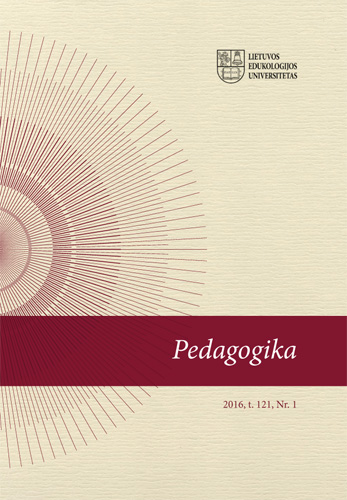Vaiko teisių įgyvendinimo galimybės vaikų dienos centruose
The Possibilities of Implementation of the Rights of the Child in Children’s Day Care Centres
Author(s): Vida Gudžinskienė, Rita Raudeliūnaitė, Rokas UscilaSubject(s): Social Sciences, Education, Law, Constitution, Jurisprudence, Human Rights and Humanitarian Law, Sociology, Preschool education
Published by: Vytauto Didžiojo Universitetas
Keywords: child; child rights; children’s day care centres; possibilities; implementation;
Summary/Abstract: As economic and cultural changes proliferate in our society, there is an increasing number of families the functioning of which disrupted – they are called social risk families. Social risk families are dominated by such negative factors as alcohol consumption, violence, negligence, failure to comply with societal norms, which are observed by growing up children everyday. Gradually children growing up in social risk families become socially injured and need exceptional assistance. In order to assist socially injured children children’s day care centres are established, one of the functions of which is to implement children’s rights. The objective of the study: to theoretically and empirically validate the possibilities of children’s day care centres to implement children’s rights. The subject of the study – the possibilities of children’s rights which are implemented in children’s day care centres. The methods of the study: theoretical methods –the analysis of scientific literature, documents. Empirical methods – a questionnaire survey (instrument – questionnaire), which was aimed at collecting information on the implementation of socially injured children’s rights attending children’s day centres. 255 children, who attend day centres in rural areas, participated in the study. The age limit of children is not less than 14 years and not more than 18 years and parents of whom gave permission that their child could participate in the study. Such children’s age span was chosen, taking into consideration the fact that the children of such age are sufficiently mature and able to adequately express their opinion(the United Nations Convention on the Rights of the Child (1989), G. M. Biegel (2009). The statistical methods of data analysis: descriptive statistics (the analysis of a frequency distribution), Spearman’s correlation coefficient.
Journal: Pedagogika
- Issue Year: 121/2016
- Issue No: 1
- Page Range: 209-224
- Page Count: 16
- Language: Lithuanian

